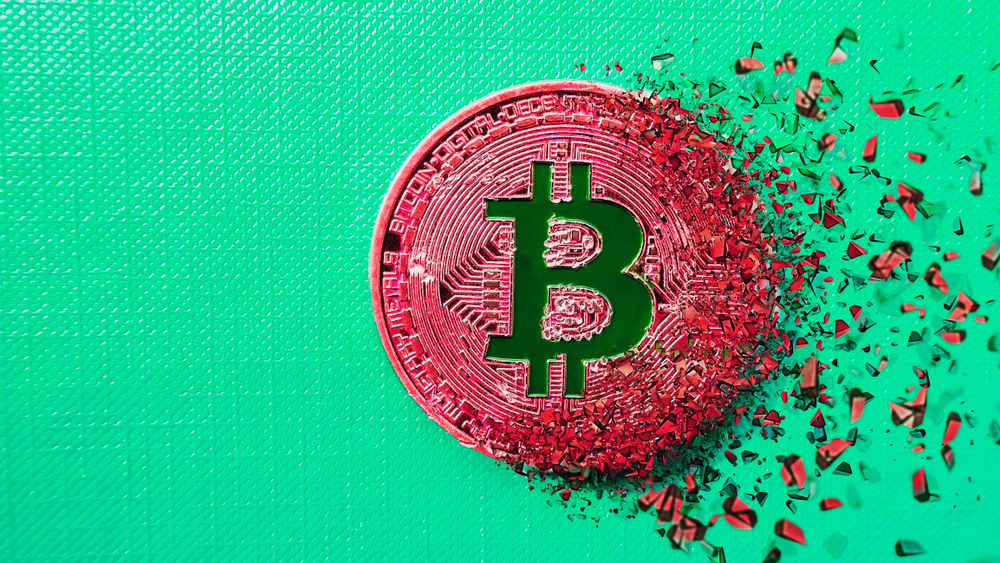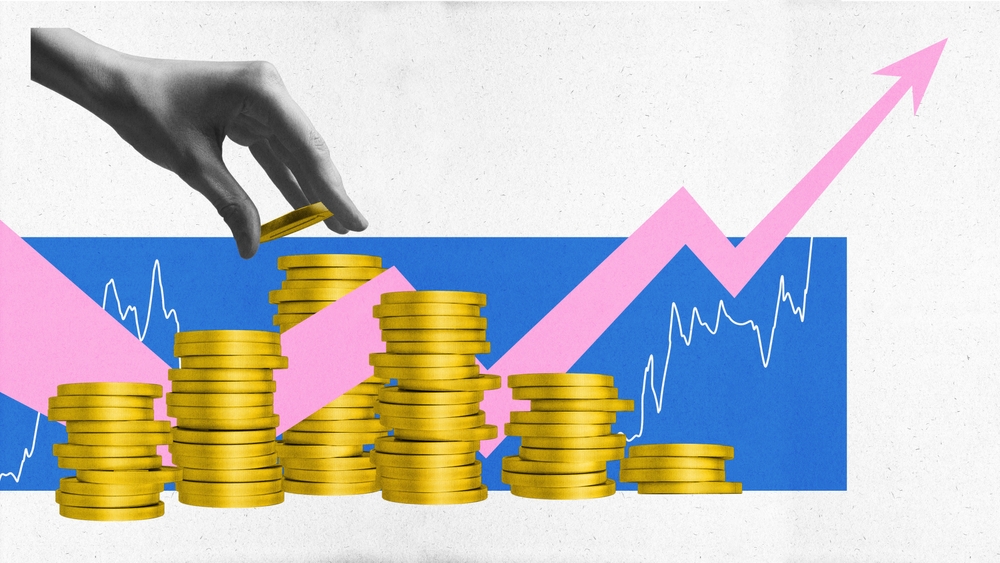In the high-stakes world of cryptocurrency, fortunes can be made in minutes—and lost just as fast. One tweet, one glitch, or one shady CEO can send entire markets into free fall. While the promise of crypto has drawn millions in with dreams of decentralization and massive gains, it’s also birthed some of the most spectacular financial implosions in modern history. These are the moments when crypto dreams turned into billion-dollar disasters. From headline-making scandals to coins that tanked overnight, these crashes didn’t just shake the market—they rattled investor trust, wiped out life savings, and left a trail of digital rubble behind.
1. The Epic Fall Of Mt. Gox

Back in 2014, Mt. Gox was the largest Bitcoin exchange in the world, handling around 70% of all Bitcoin transactions. However, this giant wasn’t as invincible as it seemed. In February of that year, Mt. Gox suddenly shut down, filing for bankruptcy and revealing that 850,000 bitcoins, worth around $450 million at the time, had disappeared. According to Investopedia, it came to light that the exchange had been suffering from security breaches and mismanagement for years.
The collapse was a major blow to the crypto community, shaking investor confidence and casting a shadow over the burgeoning industry. As the legal battles ensued, the value of Bitcoin plummeted, wiping billions from the market. It took years for the industry to recover, but the incident served as a cautionary tale about the importance of security and transparency in the crypto world. Today, Mt. Gox remains a stark reminder of how quickly the crypto landscape can change.
2. The Terra LUNA Catastrophe

In May 2022, the Terra ecosystem, including its native cryptocurrency LUNA and the stablecoin TerraUSD (UST), experienced one of the most dramatic crashes in crypto history. LUNA had been flying high, but its fortunes turned overnight when UST lost its peg to the US dollar, leading to a massive sell-off. Within days, LUNA’s market cap dropped from $40 billion to virtually nothing, as The New York Times notes.
The collapse sent shockwaves through the market, affecting other cryptocurrencies and causing widespread panic among investors. The event raised questions about the sustainability and reliability of algorithmic stablecoins, sparking debates about regulation and the need for better risk management. Although efforts were made to revive the Terra ecosystem, the damage was done, and trust in the project was irreparably harmed. It was a stark lesson in the fragility of even the most promising crypto ventures.
3. The Rapid Decline Of BitConnect

BitConnect was once touted as a high-yield investment platform, promising users astronomical returns through its lending program. However, the platform was later revealed to be one of the largest Ponzi schemes in cryptocurrency history. In January 2018, BitConnect abruptly shut down its lending and exchange platform, causing the price of its native token BCC to plummet from over $400 to less than a dollar within hours.
The collapse wiped out billions in market value, leaving countless investors with massive losses. The sudden downfall highlighted the dangers of investing in unregulated platforms with unsustainable promises. Despite numerous warnings and red flags, many were lured by the promise of quick profits, only to be left with nothing. Legal proceedings and investigations followed, but the damage to investor trust and the broader crypto market was already done.
4. The Mysterious Disappearance Of QuadrigaCX’s

According to the BBC, QuadrigaCX was once Canada’s largest cryptocurrency exchange, but it all came crashing down in 2019 under mysterious circumstances. The exchange’s CEO, Gerald Cotten, died unexpectedly while traveling in India, and with him, the keys to millions of dollars in customer funds went missing. It was revealed that QuadrigaCX had been operating under severe mismanagement and lacked proper security measures.
The sudden closure of the exchange and the loss of approximately $190 million in customer funds left investors reeling. Investigations uncovered a web of deceit, including fraudulent transactions and the misuse of customer funds. The downfall of QuadrigaCX served as a harsh reminder of the importance of due diligence when choosing an exchange. It also sparked debates on the need for regulatory oversight in the crypto industry to prevent such incidents in the future.
5. The Unexpected Crash Of Celsius Network

Celsius Network was a promising crypto lending platform that attracted many users with its high interest rates and user-friendly experience. However, according to CNBC, in 2022, the platform shocked its users by freezing withdrawals and transfers, citing extreme market conditions. This unexpected move sent panic through the crypto community and caused a sharp decline in the platform’s token, CEL.
The freeze on withdrawals left investors unable to access their funds, while the market reacted with fear and uncertainty. The incident highlighted the risks associated with centralized platforms and the need for transparency and communication. Celsius Network’s difficulties were compounded by the broader downturn in the crypto market, making recovery even more challenging. The collapse served as a cautionary tale for investors, underscoring the importance of diversifying investments and being aware of the inherent risks in crypto lending.
6. The Swift Collapse of FTX

FTX was once a leading cryptocurrency exchange known for its innovative products and rapid growth. However, in November 2022, the exchange faced a liquidity crisis that led to a shocking collapse. The trouble began when users started to question the financial health of FTX and its associated trading firm, Alameda Research, leading to a massive withdrawal of funds.
Despite attempts to reassure investors, the exodus continued, ultimately forcing FTX to file for bankruptcy. The collapse wiped out billions in value and left a significant dent in the crypto market. It served as a stark reminder of how quickly trust can evaporate in the digital asset space. The rapid downfall of FTX emphasized the need for robust financial practices and transparency to ensure the stability and trustworthiness of crypto exchanges.
7. The ICO Bubble Burst

The Initial Coin Offering (ICO) craze of 2017 saw thousands of new cryptocurrency projects emerge, raising billions in funding from eager investors. However, many of these ICOs were built on little more than ambitious promises and hype, with few delivering on their lofty goals. As the market became saturated and regulatory scrutiny increased, the ICO bubble burst, leading to a dramatic decline in the value of many tokens.
Investors who had poured money into these projects faced significant losses as scams and failures became apparent. The collapse of the ICO market served as a wake-up call for the crypto industry, highlighting the need for due diligence and realistic expectations. It also paved the way for more regulated fundraising methods, such as Security Token Offerings (STOs) and Initial Exchange Offerings (IEOs). The ICO bust was a pivotal moment in the evolution of the crypto market, reshaping how new projects are launched and funded.
8. The Downfall Of OneCoin

OneCoin was marketed as the next big thing in cryptocurrency, promising investors extraordinary returns. However, it was later exposed as one of the largest Ponzi schemes in history, defrauding investors of billions of dollars. The scheme was masterminded by Ruja Ignatova, who vanished with the funds as authorities closed in, leaving investors with worthless tokens.
The collapse of OneCoin highlighted the dire consequences of investing in unregulated and opaque projects. It served as a cautionary tale about the importance of conducting thorough research and being wary of offers that seem too good to be true. The scandal also spurred law enforcement worldwide to take a closer look at fraudulent activities in the crypto space. Despite the damage caused, the OneCoin debacle led to increased awareness and calls for stronger regulatory frameworks to protect investors.
9. The Bitfinex Hack Nightmare

In 2016, Bitfinex, one of the largest cryptocurrency exchanges at the time, suffered a devastating security breach. Hackers made off with approximately 120,000 bitcoins, valued at around $72 million back then, leaving the exchange and its users reeling. The incident sent shockwaves through the crypto community, causing Bitcoin’s price to nosedive as fears of insecurity gripped investors.
A significant loss of trust in Bitfinex and similar platforms marked the aftermath of the hack. To compensate affected users, Bitfinex took the unprecedented step of issuing its own token, BFX, which could be redeemed or traded later. While the exchange managed to reimburse its users eventually, the hack underscored the critical importance of rigorous security measures. It also highlighted the ongoing battle between exchanges and cybercriminals, with the need for continuous improvements in security protocols.
10. The Spectacular Crash Of GAW Miners And PayCoin

GAW Miners was a company that promised high returns through its cloud mining services and its cryptocurrency, PayCoin. The venture gained attention with bold claims and promises of a minimum floor price for PayCoin. However, it all came crashing down when it was revealed that the company was operating as a Ponzi scheme, using new investors’ funds to pay returns to earlier ones.
The fallout saw GAW Miners’ CEO face charges, while investors found themselves with significant losses. The collapse underscored the risks associated with cloud mining and unbacked price guarantees. It also highlighted the importance of skepticism and due diligence in evaluating ambitious crypto projects. The PayCoin debacle remains a lesson in the dangers of hype-driven investments and the need for investors to remain vigilant.
11. The Myriad Missteps Of Cryptopia

Cryptopia was a New Zealand-based cryptocurrency exchange that rose to prominence by offering a wide range of altcoins. However, its success was short-lived, as the platform faced a crippling hack in January 2019. The breach resulted in the loss of approximately $16 million in various cryptocurrencies, leading to a shutdown of the exchange and a protracted liquidation process.
The collapse of Cryptopia left users frustrated and skeptical about the security of smaller exchanges. It highlighted the importance of robust security protocols and the challenges of recovering assets from crypto-related incidents. The incident also emphasized the risks associated with storing digital assets on exchanges, encouraging more users to consider hardware wallets and other secure storage solutions. Despite the setbacks, the Cryptopia collapse served as a valuable lesson in the ongoing quest for more reliable and secure crypto platforms.
12. The Turbulent Tale Of WEX

WEX, formerly known as BTC-e, was a cryptocurrency exchange that faced numerous legal and operational challenges. The exchange was implicated in money laundering activities, leading to its eventual shutdown in 2018. Users found themselves unable to access their funds, while the exchange’s management faced legal scrutiny and accusations of fraudulent activities.
The collapse of WEX highlighted the risks of using exchanges with questionable practices and ties to illegal activities. It served as a stark reminder of the importance of regulatory compliance and transparency in the crypto space. The incident also influenced the development of stricter Know Your Customer (KYC) and Anti-Money Laundering (AML) regulations across the industry. WEX’s downfall remains a cautionary tale for investors, emphasizing the need for vigilance and careful selection when choosing a cryptocurrency exchange.
13. The Premature Demise Of Coincheck

Coincheck, one of Japan’s largest cryptocurrency exchanges, experienced a massive security breach in January 2018. Hackers stole approximately $530 million worth of NEM tokens, making it one of the largest crypto heists in history. The incident exposed significant vulnerabilities in Coincheck’s security infrastructure and sent shockwaves through the global crypto market.
In the aftermath, Coincheck took steps to reimburse affected users and improve its security measures. The breach sparked a regulatory overhaul in Japan, with authorities implementing stricter controls and oversight on exchanges. Despite the challenges, Coincheck’s response and recovery efforts demonstrated the importance of accountability and resilience in the face of adversity. The incident remains a pivotal moment in the history of cryptocurrency exchanges, underscoring the critical importance of robust security practices.
This article is for informational purposes only and should not be construed as financial advice. Consult a financial professional before making investment or other financial decisions. The author and publisher make no warranties of any kind.








